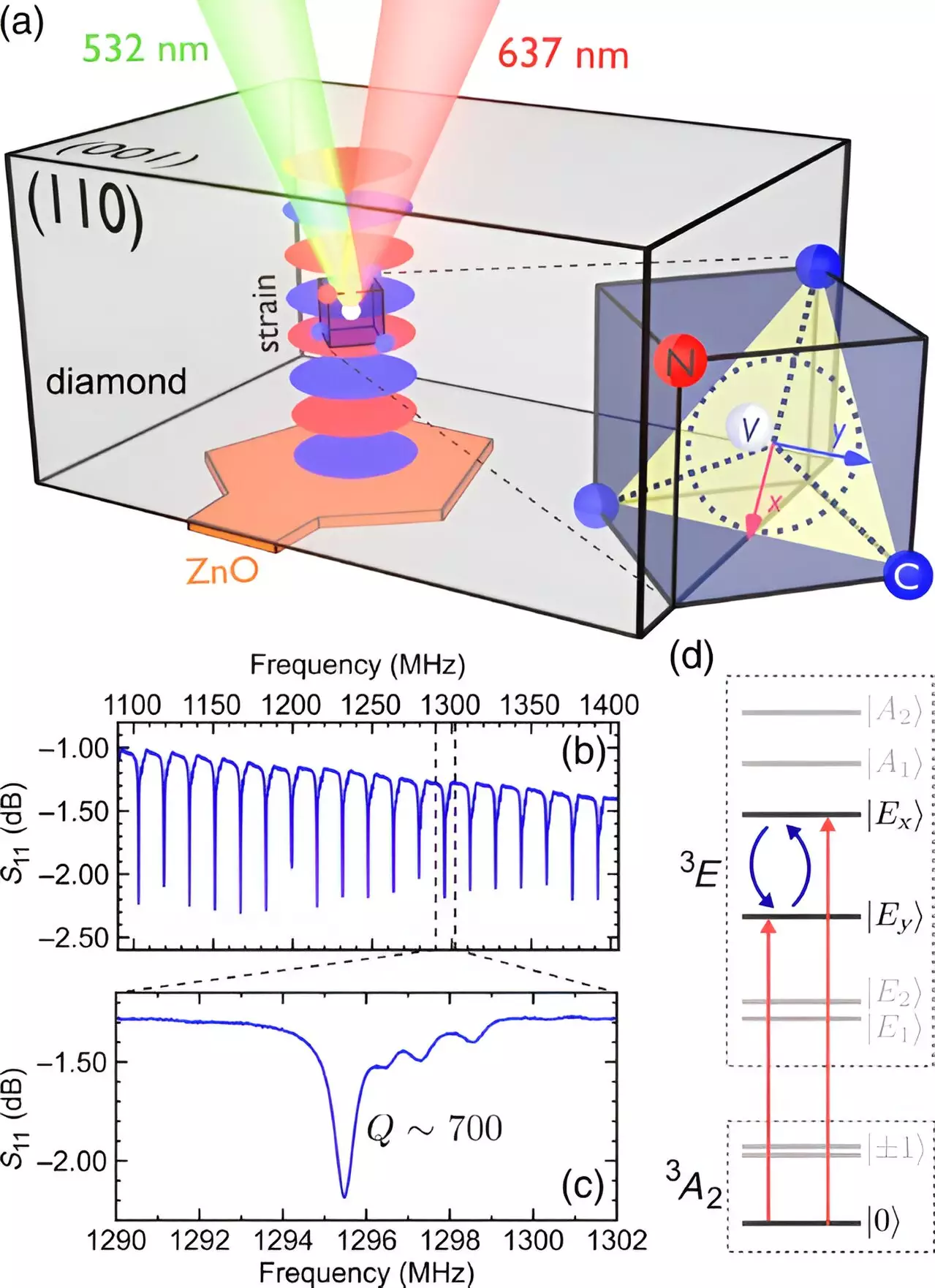In the realm of quantum information technology, the control of electrons and other tiny particles is crucial for advancements in the field. Researchers at Cornell University have recently conducted a study showcasing the impact of acoustic sound waves on the motion of electrons as they orbit lattice defects in diamonds. This breakthrough has the potential to enhance the sensitivity of quantum sensors and broaden the scope of applications for quantum devices.
The study, titled “Coherent acoustic control of defect orbital states in the strong-driving limit,” was a collaborative effort between Gregory Fuchs, a professor of applied and engineering physics, and his team, along with Erich Mueller, a physics professor in the College of Arts and Sciences. By engineering a setup in which sound waves could induce “quantum jumps” between electron orbits, the researchers were able to explore new avenues for controlling electron behavior at the quantum level. The findings of this study were published in the journal PRX Quantum, highlighting the significance of this innovative approach.
One of the key aspects of the study involved the construction of a microscopic speaker on a diamond chip by postdoctoral associate Brendan McCullian. This speaker operated at a frequency that aligned with an electronic transition, allowing for precise control over electron motion within the diamond lattice. Through techniques akin to those used in magnetic resonance imaging, the researchers successfully demonstrated coherent control over individual electrons, paving the way for further exploration of quantum phenomena.
In the realm of quantum computing, maintaining the coherence of qubits is essential for achieving practical applications. Qubits, the quantum equivalents of classical bits, need to remain in a stable state to perform useful tasks. Traditional methods such as spin resonance have been used to extend qubit coherence times by leveraging microwaves and magnetic fields. The Cornell University study sought to expand this concept to the acoustic domain, aiming to enhance the coherence of electron orbitals.
Gregory Fuchs and his team successfully drove orbital states using acoustic waves in a manner analogous to spin resonance techniques. By applying established tools such as coherent control and Rabi oscillations to orbital states, the researchers demonstrated the validity of these techniques in the acoustic domain. This novel approach not only sheds light on the behavior of nitrogen-vacancy (NV) centers in diamond lattices but also offers insights into combating environmental fluctuations that can impact quantum networking applications.
The collaborative nature of this research project exemplifies the synergy between experimental and theoretical approaches in quantum physics. While experimental techniques were developed in Fuchs’s lab, the collaboration with the Department of Physics provided a theoretical framework for analyzing the results and making informed predictions. The success of this interdisciplinary collaboration underscores the importance of combining diverse expertise to push the boundaries of scientific discovery.
The study conducted by Cornell University researchers showcases the potential of acoustic sound waves in controlling electron orbits at the quantum level. This innovative approach opens up new possibilities for enhancing the sensitivity of quantum sensors and improving the coherence of qubits in quantum devices. By leveraging the power of collaborative research and interdisciplinary cooperation, the study paves the way for future advancements in quantum information technology.


Leave a Reply